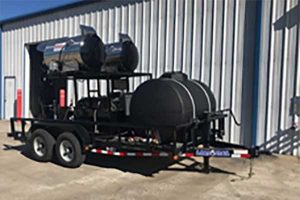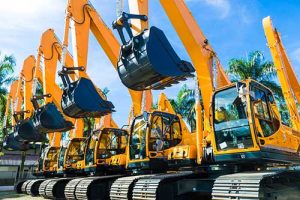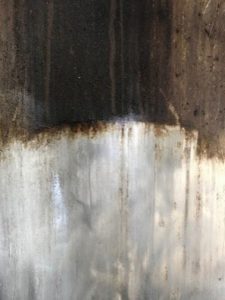Before making tank (confined space) entry, an inspector must confirm that personnel will not be exposed to an explosive environment. In order to determine whether or not a confined space is considered an explosive environment, we must first understand what LEL and UEL mean.
Lower Explosive Limit (LEL) is defined as the lowest concentration (by percentage) of a gas or vapor in air that is capable of producing a flash of fire in presence of an ignition source.
Upper Explosive Limit (UEL) is defined as the highest concentration (by percentage) of a gas or vapor in air that is capable of producing a flash of fire in presence of an ignition source.
What this means is that if the concentration of a combustible liquids’ vapor in air is between that products’ LEL and UEL, then the mixture has potential to burn or ignite. If the concentration is below the LEL, the mixture is too “lean” to burn. If the concentration is above the UEL, the mixture is too “rich” to burn.
During a tank cleaning job, most plants and tank terminals require vapor concentration in air to be below the LEL before anyone can perform work inside the tank. How far below LEL may vary between product and facility protocol. However, in all cases gas detection systems are used to measure the concentration as a percentage of LEL. For example, if you refer to an SDS for benzene, you can find in Section 9 that the LEL is 1.2% by volume and the UEL is 7.8% by volume. If the gas detection system reads 100% LEL, it means that the air contains a 1.2% concentration of benzene. If 50% LEL is detected, then there is 0.6% benzene present. 0% LEL denotes a combustible gas-free environment. Until the %LEL reading is below the facility’s required level, the tank must be “DEGASSED” prior to tank entry.
So how do you “degas” a tank? In some cases when the combustible liquid is non-toxic, it is permitted to vent the tank off to the atmosphere. Sometimes nitrogen gas is injected to “smother” the flammable vapor space and push/direct vapor to a thermal oxidizer or flare system where it is burned off. If nitrogen is unavailable, vacuum systems may be used to direct the vapors. In some cases rather than burn the vapor, it is directed through a liquid scrubbing system and/or a carbon filter, both of which are designed to absorb the flammable molecules and exhaust clean air.
In all cases, the degassing phase of a tank cleaning job takes time. The more product that’s left in the tank, the longer it will take to degas. So it’s always best to find ways to suck out as much of the residual product as possible, otherwise, you will constantly be battling the vapor releasing and driving up the LEL. The longer it takes to degas the tank, the longer it will be before the tank cleaning crew can enter the tank and really get to work. And once again in all cases, time is money.
SO… what can be done to help speed up the degassing process and get tank cleaners inside the tank?? This is where A-ONE comes in to help!
Z-500S DEGASSING AGENT
Z-500S is a degassing agent formulated to encapsulate LEL-producing hydrocarbon, also referred to as VOCs (Volatile Organic Compounds). It can be sprayed in to the tank during the “degassing phase” to help knock LEL down more quickly. For example, say you are degassing a crude oil tank with high benzene levels using a T.O.. I always recommend sucking out as much of the solids as possible first to help reduce the amount of VOC vapor released as you begin agitating residual product with your degassing solution. This crucial step will also minimize your chemical consumption. Next, mix up anywhere from a 4:1 to 20:1 (water:Z-500S) degassing solution and apply it to the walls and floor with a high volume pump. Most operators use a 30-50 GPM depending on wall height. You may consider applying a more concentrated solution initially to help saturate the tank, followed by either straight water or a very light solution to help spread it around.
Per feedback from several of our tank cleaning customers that regularly clean consistently similar types of hydrocarbon tanks, we have confirmed that Z-500S will reduce degassing phase by at LEAST 1/3 the time when used properly. If there are minimal solids left inside the tank, LEL will often drop to zero instantaneously. This directly translates in to savings by speeding up job progress and reducing rental time of degassing equipment. As an additional benefit, Z-500S also contains a pleasant fragrance that masks residual hydrocarbon odor very well.
CAPTURE – VAPOR SCRUBBING SOLUTION
Capture is an oil-based vapor scrubbing solution formulated to filter VOC from a vapor stream by instantly absorbing and retaining combustible hydrocarbon molecules. Capture is often used in large scale scrubbing systems during tank or line cleaning jobs when the facility does not wish to burn the vapors. Most mobile scrubbing units also utilize carbon filters, however, using Capture on the front end is not only safer, but also much more economical than carbon. Many vacuum trucks are now equipped with small scrubber units as well. Capture can be added to these liquid scrubbers to filter VOC from pump exhaust.
Z-500S can be used as a water-based scrubbing solution if it is “defoamed” using an anti-foam additive. The perk to Z-500S is that it can be diluted with water to reduce the price per gallon for direct savings. However when compared to water-based scrubbing solutions, the oil-based Capture absorbs VOC more quickly and can retain more VOC before reaching maximum saturation. This means you will be shutting down the unit to change out your scrubber solution much less frequently if you utilize Capture.
CAUSTIC SODA
In addition to A-ONE’s proprietary blends, we also distribute a very large volume of sodium hydroxide. Caustic Soda is normally sold in the 50% and 25% concentrations, however, we can blend large volume orders in to a lower more ready-to-use solution that can be pumped directly in to a scrubber. Caustic Soda is a staple commodity for scrubbing VOC and H2S.
SC-85 H2S Scavenger
For scrubbing strictly H2S vapors, our SC-85 is a concentrated triazine-based scrubbing solution that chemically neutralizes H2S upon contact. Every 1 gallon of concentrated SC-85 neutralizes 2.2 pounds of H2S. Recommended dilution ratios for a scrubber can vary from 6% to 50% depending on the vapor flow rate, H2S concentration, and project duration.
How to Degas a Tank
- Post author:A-One Chemicals
- Post published:April 16, 2019
- Post category:News
- Post comments:0 Comments



